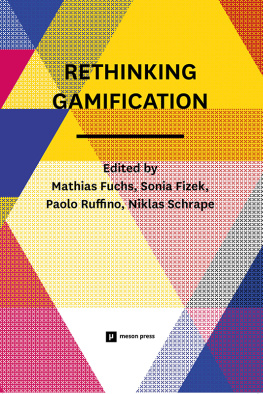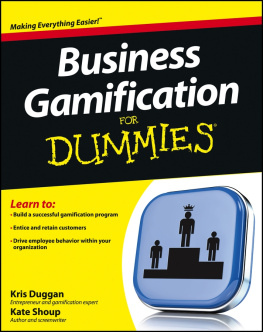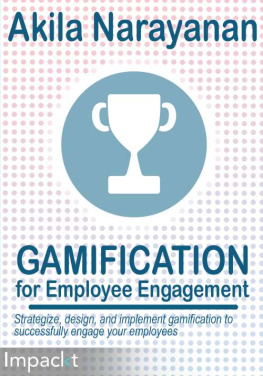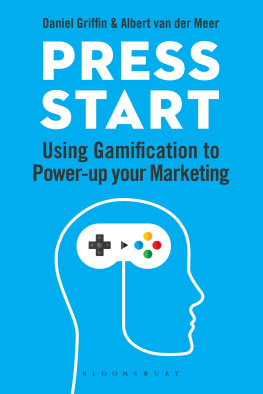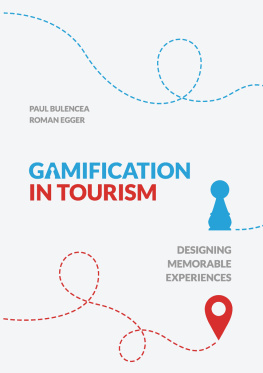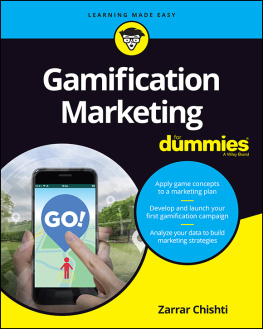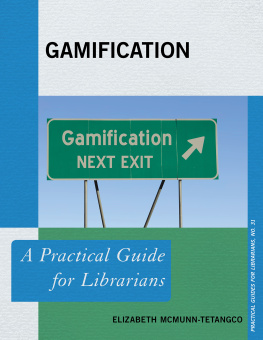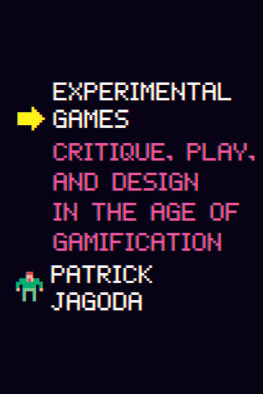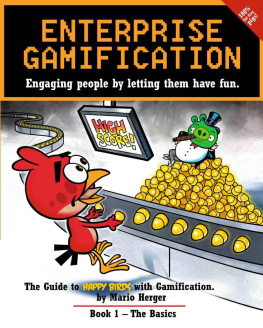Introduction
This book is about gamification, and much more. The publication intends to explore the concept of gamification, its history and applications, its implications for theory and practice. It also aims at doing more than simply mapping a trend, or providing guidelines for the design of gamification apps. In this book the concept of gamification will be rethought, through several distinct approaches and a multitude of questions.
But first, what is gamification? Gamification can be approached in at least two ways. First, as a general process in which games and playful experiences are understood as essential components of society and culture. From this perspective we could look at how practices and rituals, belonging to different historical and cultural contexts, might take the form of or resemble a game. Roger Caillois, while drawing on anthropology, biology and the study of myths, has shown how the playful might in fact belong to living beings of any kind, and not be limited to the human sphere. It might also be less of a process of rationalisation, and more of an instinctive reaction to the surrounding environment, a form of adaptation that connects life and death into one single thing (Caillois 1960, 1961 and 1964). Before him, Johan Huizinga had already argued that play is an essential component in the formation of societies and civilisation (1949 / 1938). From this perspective, gamification may be viewed as a much broader phenomenon, and as a concept not nearly as novel as many would have us believe.
More recently, however, gamification has also been used to describe a much more limited practice. This second and more widely-known meaning has been brought forward by marketing gurus and designers over the last few years. It is this latter sense that has led to a great number of definitions on gamification. It is also this second meaning that drives us to discuss gamification in the context of this publication. Sebastian Deterding, Rilla Khaled, Lennart Nacke and Dan Dixon have proposed a tentative history of the term: gamification as a term originated in the digital media industry. The first documented use dates back to 2008, but gamification only entered widespread adoption in the second half of 2010 (Deterding et al. 2011, 1).
In other publications we can read that extensive use of the term has been reported from 2010, but its origins are probably to be found in a British consultancy company, Conundra Ltd., founded in 2003 by Nick Pelling, a game designer, who claimed to be specialising in gamification (Werbach and Hunter 2012). The no longer active Conundra Ltd. focused on helping manufacturers evolve their electronic devices into entertainment platforms (Conundra Ltd. 2014). Its core business focused on advising companies interested in attracting new customers on the implementation of game features into the companies products and services. This type of activity was called gamification on Conundras website (ibid.). More recently the idea of gamifying a business seems to have re-emerged, not necessarily directly as a result of Pellings first attempt but in a very similar vein.
Over the last few years the marketing and consultancy sectors have been promoting gamification as a potential source of revenue. This period has also witnessed the emergence of several events and publications that have contributed to defining gamification. Gabe Zichermanns and Cristopher Cunninghams book Gamification by Design: Implementing Game Mechanics in Web and Mobile Apps (2011) is one of the most popular in the business context, as is Zichermanns website Gamification.co and the associated annual conference Gamification Summit held annually in San Francisco since 2011. Jane McGonigals work, expounded in her contribution at the TED Talk series in 2010, is also concerned with selling gamification to corporations. In her book Reality is Broken: Why Games Make Us Better and How They Can Change the World (2011) she mostly looks at her own work as a consultant for McDonalds, the Olympic Games organising committees, and other companies for whom she organised marketing campaigns based on alternate reality games. In McGonigals view, gamification is not only a new goldmine for designers and business people; it is also a tool that has the power to change the world.
In her understanding, gamification is a concept that describes a new age where gamers can collectively use their problem-solving skills not only to solve puzzles within a digital game but also to approach social and political issues in the real world. Gaming, according to McGonigals vision, could and should play a redeeming role. Game designers could become the new social entrepreneurs, and citizens become gamers. From this perspective, gamification thus becomes a technique for enabling greatly ambitious change. Reporter Alex Konrad on the Fortune segment of CNN Money described gamification as a sort of new Wild West on the 17th of October 2011: gamification is the hot new business concept, with many of the worlds most admired companies signing on (Konrad 2011). On the 10th of October Rachel Emma Silverman of the Wall Street Journal also declared that companies all over the world were already jumping onto the gamification bandwagon (Silverman 2011).
It seems that gamification is now the keyword for a generation of social entrepreneurs and marketing experts, in perfect and timely combination with the re-evaluation of participatory practices (as also recorded in the art and cultural sector, see Bishop 2012) and the trends of quantification and self-governance (often categorised under the label of the Quantified Self movement). Thus, the question remains: Does gamification need to be rethought? Is there something wrong with it? Or to put it differently, why do we need this book in the first place?
Let us start by saying that, according to its many promoters and evangelists, there is nothing wrong with gamification at all. Quite on the contrary, although the keyword might now be a bit more rusty than a few years ago, consultancies and workshops on this topic are still popular, as well as academic courses and training programmes. In the blogs, workshops, and publications on the topic it seems that gamification is working so well that the last thing it needs is second guessing. Consumer loyalty, issues related to finance and governance, workers productivity, training and development these are only some of the areas that are allegedly being positively revolutionised by the emergence of gamification.
However, if we have to summarise why gamification needs to be rethought in a sentence, it would be: Precisely because it works. The number of statements produced in support of the rise of gamification and the wide adoption of this concept, in both private and public sectors, force us, thinkers and players, to consider what exactly is at stake in its emergence. What could it possibly be that makes such an enthusiastic narrative apparently fulfil itself so perfectly? How come the ideas surrounding gamification happened to confirm themselves with no need for further discussion?
The number of critiques of gamification is in fact already quite large. As outlined by Ian Bogost in several contexts (2011a, 2011b), gamification has little to do with the design of games (or an allegedly salvific process), and much more with the exploitation of consumers. It frustrates the practice of game design and reduces playing to a stimulus-response experience; whereas, games, and video games in particular, have been trying to differentiate and complicate the meanings of play in a digital culture. Gamification so far has been a bad word for those involved in the study and understanding of video games, as it has been associated with a process of appropriation of the values of digital gaming by marketing and business interests. It seems that gamification works only in the eyes of those who have been inventing and promoting it in the first place. In other words, gamification needs to either disappear or be rethought, if it wants to gain the respect of those who have been working with games over the last decades.

